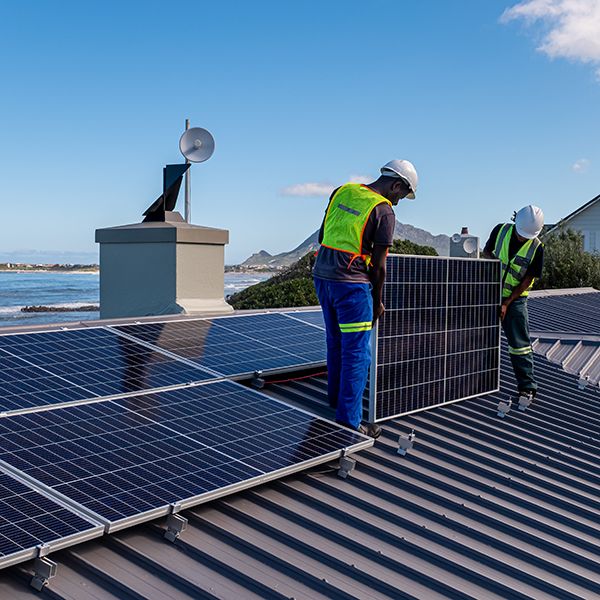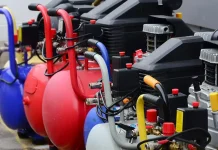The sun, an endless source of energy, has been warming our planet for billions of years. Now, thanks to remarkable technological advancements, we can harness this incredible power to generate clean, sustainable electricity for our homes and businesses. If you’ve been curious about solar energy North Devon, this beginner’s guide will demystify solar panels and illuminate how they work to power a greener future.
What Exactly Are Solar Panels?
At their most basic, solar panels are devices that convert sunlight directly into electricity. They are also known as photovoltaic (PV) panels, with “photo” meaning light and “voltaic” referring to electricity. Imagine them as special sponges that soak up sunlight and squeeze out electrons to create an electric current.
Each solar panel is made up of many smaller units called solar cells. These cells are typically made from semiconductor materials, most commonly silicon.
How Do Solar Panels Work? The Photovoltaic Effect Explained
The magic behind solar panels lies in something called the photovoltaic effect. Here’s a simplified breakdown:
- Sunlight Strikes the Panel: When photons (tiny particles of light from the sun) hit the solar cells, they energize the electrons within the silicon material.
- Electrons Get Moving: This energy causes the electrons to break free from their atoms and start moving.
- Electric Field Creates Flow: The solar cell is designed with an internal electric field that acts like a one-way street, pushing these freed electrons in a specific direction. This directed flow of electrons constitutes an electric current – specifically, Direct Current (DC) electricity.
- DC to AC Conversion: The DC electricity generated by the solar panels isn’t directly usable by most household appliances, which run on Alternating Current (AC). This is where an inverter comes in. The inverter is a crucial component that converts the DC electricity from your panels into usable AC electricity for your home or business.
- Powering Your Property & The Grid: The AC electricity then flows into your electrical panel, powering your lights, appliances, and devices. If your solar system produces more electricity than you’re currently using, the excess can be sent back to the main electricity grid (a process called net metering), earning you credits on your utility bill. If you have a battery storage system, the excess power can be stored for later use.
Key Components of a Solar Power System
Beyond the panels themselves, a complete solar power system for your home typically includes:
- Solar Panels (PV Modules): The stars of the show, converting sunlight into DC electricity.
- Inverter: The brain of the system, converting DC electricity to usable AC electricity. There are two main types:
- String Inverters: A single inverter handles the output of multiple panels wired together in a “string.”
- Microinverters: Each panel has its own small inverter, maximizing efficiency even if some panels are shaded.
- Racking and Mounting System: The framework that securely attaches the panels to your roof or ground, ensuring optimal angle and stability.
- Wiring and Cabling: Connects all the components of the system.
- Monitoring System: Allows you to track your system’s performance, energy production, and consumption, often via a smartphone app.
- Battery Storage (Optional but Increasingly Popular): Stores excess solar energy generated during the day for use at night or during power outages, offering greater energy independence.
- Net Meter (Optional): A special meter installed by your utility company that tracks the electricity you send to and draw from the grid.
Types of Solar Panels for Residential Use
While all solar panels perform the same basic function, they come in different types, each with its own characteristics:
- Monocrystalline Solar Panels:
- Made From: A single, pure silicon crystal.
- Appearance: Typically dark black/blue, uniform look.
- Efficiency: Highest efficiency (17-24%), meaning they produce more power per square foot.
- Cost: Generally more expensive.
- Best For: Homes with limited roof space where maximizing power output is crucial.
- Polycrystalline Solar Panels:
- Made From: Multiple silicon crystal fragments melted together.
- Appearance: Often blue with a speckled, marbled look.
- Efficiency: Slightly lower efficiency (15-18%) than monocrystalline.
- Cost: More affordable.
- Best For: Homes with ample roof space where budget is a primary concern.
- Thin-Film Solar Panels:
- Made From: Various materials like amorphous silicon, cadmium telluride (CdTe), or copper indium gallium selenide (CIGS) applied in thin layers.
- Appearance: Sleek, flexible, often completely black.
- Efficiency: Generally the least efficient (7-18%).
- Cost: Lowest cost per watt, but often require more space for the same output.
- Best For: Specialized applications like curved surfaces, portable devices, or large commercial installations with vast available area. Not typically used for standard residential rooftops in Pakistan due to lower efficiency and space requirements
Solar Panel Efficiency Explained
Solar panel efficiency refers to how much of the sunlight hitting the panel is converted into usable electricity. If a panel has 20% efficiency, it means it converts 20% of the sun’s energy into electricity. Higher efficiency means you need fewer panels to generate the same amount of power, which is great for smaller roofs. Modern residential panels typically range from 18% to over 22% efficiency.
Installation and Maintenance: Simpler Than You Think
- Installation Process: A professional solar installer will conduct a site assessment (checking your roof’s condition, shading, and orientation), design a customized system, handle permits, install the panels and wiring, and connect it to your home’s electrical system.
- Maintenance: Solar panels require surprisingly little maintenance. Rain often cleans them naturally. For drier, dustier climates like parts of Pakistan, occasional cleaning (a few times a year with water) might be beneficial to maintain optimal performance. Modern systems often include monitoring apps that alert you to any performance issues, making it easy to keep an eye on your clean energy production.
The Big Picture: Why Go Solar?
Switching to solar power in 2025 is more than just an environmentally conscious choice; it’s a smart financial decision with long-term benefits:
- Reduced Electricity Bills: Significantly lower or even eliminate your monthly utility costs.
- Increased Property Value: Homes with solar systems are more attractive to buyers.
- Environmental Impact: Drastically reduce your carbon footprint and contribute to cleaner air.
- Energy Independence: Less reliance on the grid and protection from rising electricity prices and loadshedding (a major concern in Pakistan).
- Government Incentives: Take advantage of tax credits, rebates, and low-markup financing schemes designed to make solar affordable (relevant in Pakistan).
Understanding solar panels is the first step towards embracing a cleaner, more sustainable, and more energy-independent lifestyle. With technology constantly evolving and benefits becoming ever more compelling, the future of energy is undeniably bright.










